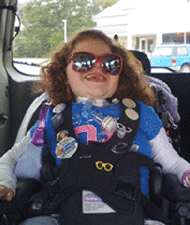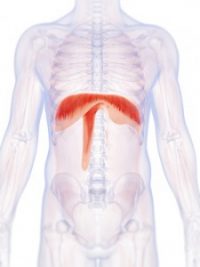
For most people, breathing is a natural action. We do not think about it, yet is vital to our existence. But for those living with quadriplegia, the muscles required for breathing are paralyzed, rendering them unable to breathe on their own without mechanical assistance.
Quadriplegia (or tetraplegia) is the paralysis of all four limbs or of the entire body below the neck. It is usually the result of a spinal cord injury (SCI) in the C1-C7 vertebrae (those that comprise the cervical spine).
In the United States alone, over 200,000 people currently live with a spinal cord injury, with 46 percent acquiring the injury as a result of a motor vehicle accident.
How an SCI Affects Breathing
NORMAL BREATHING FUNCTION
Air enters each lung individually through the trachea and passes through a spongy structure located in the lungs. Contained within this structure is an elaborate network of blood vessels which carry oxygen through the body and carbon dioxide to the lungs to be expelled.
Breathing is an involuntary reflex involving the muscles between the ribs (intercostal muscles) and the diaphragm (which is also a muscle). These muscles work in tandem, with intercostal muscles moving the ribcage up and forward while the diaphragm moves downward, allowing us to inhale. Subsequently, both the intercostal muscles and the diaphragm relax, resulting in exhaling.
BREATHING WITH A SCI
With a SCI C-4 and higher, all of the muscles that control breathing are paralyzed, as the nerves controlling those muscles are located in in the upper portion of the neck. Those with an injury to this part of the spine may require breathing assistance, which is usually provided through a mechanical ventilator immediately following injury.
AVERY DIAPHRAGM PACING SYSTEM
The Avery Diaphragm Pacing System may be an alternative for those with quadriplegia hoping to live a life free of a mechanical ventilator. This diaphragm pacing system can provide support for patients with chronic respiratory insufficiency whose diaphragm, lungs and phrenic nerves have limited function.
How does it work?
A surgeon implants an electrode next to the phrenic nerve (which controls the diaphragm muscle). The electrode has a connector that attaches to a receiver placed in a ‘pocket’ just below the skin’s surface. The device sends impulses to the phrenic nerve, which in turn stimulates the diaphragm to expand and contract, creating a more natural breathing pattern.
Advantages of the Avery Diaphragm Pacing System Over Mechanical Ventilation
When compared with a mechanical ventilator, patients typically prefer the Avery Diaphragm Pacing System. The Diaphragm Pacing System stimulates the diaphragm in order to draw air into the lungs (negative pressure), which is more physiologically accurate as well as more comfortable for the patient.
In comparison, mechanical ventilation forces air into the lungs (positive pressure), which may cause physical distress. In addition, patients using a mechanical ventilator may be at risk for ventilator-associated pneumonia (VAP) and other upper airway infections. To exacerbate the problem, several bacteria, which are particularly important causes of VAP, are resistant to commonly used antibiotics.
Other advantages of the Avery Diaphragm Pacing System may also include:
- Increase in mobility
- Increase in sense of smell
- Greater ease of eating and drinking
- Silent operation which improves active participation in social and educational activities
CAROLINE’S STORY
In February of 2003, ten-month old Caroline, as a result of a motor vehicle accident, became a C1- C2 quadriplegic. Like many others who are tethered to mechanical ventilators, she had frequent hospital stays due to upper respiratory infections.
Then, in August of 2007, four-year-old Caroline was implanted with the Avery Diaphragm Pacing System at Hershey Medical Center in Pennsylvania, and has been pacing 24 hours a day ever since. Because of her pacer, Caroline enjoys a variety of outdoor activities and attends school.
Her story inspired Caroline’s Hope, a campaign to raise funds through donation or road races for Caroline’s continued care. Click here for more information on Caroline’s Hope.

